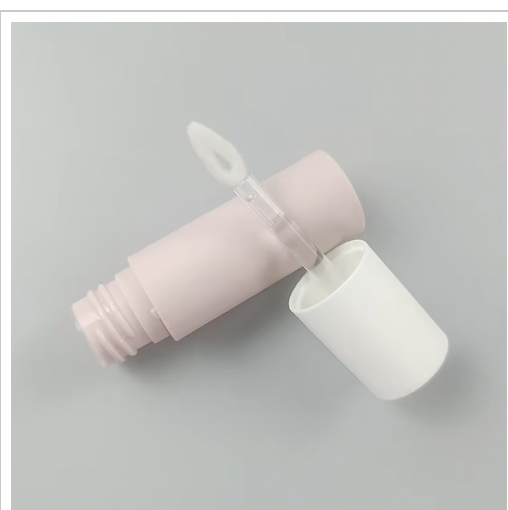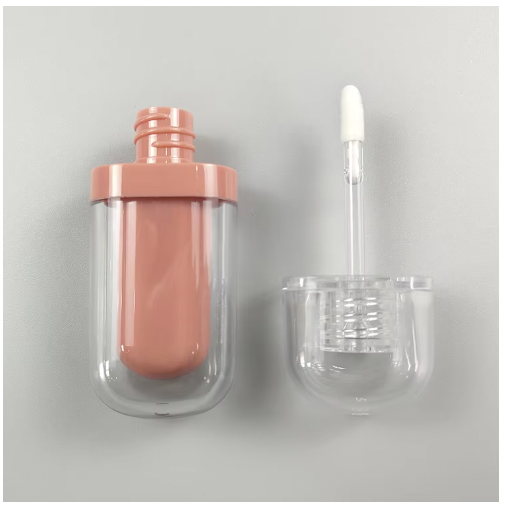Biodegradable Materials and Waste Reduction
The zero-waste lipstick tubes are made from compostable materials is really great for the environment. These plastics, which were derived from things like corn starch, sugarcane and paper pulp, offer a more sustainable option in comparison to traditional plastics, as they biodegrade quicker. Traditional plastics take hundreds of years to decompose, and are a major contributor to the waste in landfills. Biodegradable substances, on the other hand, decompose at a faster rate, thus simplifying waste control and lowering stress on landfills.
Relying on biodegradable packaging doesn’t just minimize rubbish, it reduces the risk of harm to the local environment. Environmentalists noted that using biodegradable lipstick tubes can reduce the generated waste compared to their conventional plastic packaging. And that where a brand can see very transparently where theyre delivering value by using sustainable materials.
Recycled Components Supporting Circular Economy
The use of recycled materials in lipstick tube manufacturing helps contribute to the circular economy by lessening reliance on virgin resources. It avoids not only waste but also energy and carbon emissions. Recycling provides a more sustainable packaging option, with substantial carbon emissions savings (Environmental Protection Agency). By using recycled ingredients businesses can improve their sustainability credentials and attract eco-concsious customers.
Good sustainable acts do drive positive brand reputation and consumer trust. Many major brands are understanding the need for eco friendly packaging and are already using recycled packaging in their brands. This dedication to sustainability is not only good for the company image, but it meets the increase in consumer demand for environmentally conscious brands. Selecting recycled lipstick tubes allows companies to improve their competitive advantage in the market, while contributing to the onward surge of environmental efforts across the globe!
The Role of Refillable Lipstick Containers
Cutting Down Single-Use Packaging
That’s why refillable lipstick cases are an increasingly crucial way to fight against the use of single-use, disposable plastics, even in the beauty world. Thanks to the possibility of reusing the main body and replacing the content, these packages reduce the environmental impact. This method is increasing in popularity, reflecting the growing consumer preference for sustainable options, which has been quantified in the form of retail data reporting a growing popularity of refillable cosmetics. Not only is it environmentally supportive by far less waste, but it also saves on pollution and teaches eco-friendly habits and makes the product lifestan last longer.
Economic Benefits for Brands and Consumers
Economically, refilled lipstick containers have some very real appeals for both consumers and brands. For consumers, the upfront costs of a refillable system can be countered by the long-term savings of purchasing only refills rather than entirely new lipstick tubes. Refillable options are another way for companies to boost consumer loyalty and sales, given the absolutely widespread market demand for sustainability. Furthermore, companies that participate in refillable programmes can derive benefits such as tax reductions or incentives, thereby reinforcing their sustainability pledge and the value of their brand.
Enhancing Brand Image Through Sustainable Packaging
Attracting Eco-Conscious Customers
We are seeing more and more brands start to think strategically about adopting sustainable packaging in an effort to appeal to environmentally minded consumers. Studies have shown that a large portion of consumers are now actively looking for sustainable products, which highlights a need for sustainable packaging. It has, for example, driven market share for companies such as Unilever, who are driving their growth in markets such as India and China.” For example, in the race to market with eco friendly products and to demonstrate these efforts to consumers, companies can gain an advantage. Social networks are vital to sustain and enable the promotion of sustainability brand, through which a brand can communicate with consumers who care about environmental consciousness and share their message to an eco-conscious audience.
Boosting CSR and Market Position
Sustainable packaging provides companies with a large CSR (Corporate Social Responsibility) enhancement, which is attractive to socially responsible end-consumers. It’s a game changer in any brand’s playbook, and what we know from insights shared by industry experts, is that operating these sustainable practices is a real leg-up on positioning in the market and offers competitive advantages. In particular, companies such as Patagonia are successfully giving CSR profiles an advancement through sustainable products, reinforcing their market advantages. With a proper implementation of environment friendly policy the companies not only discharge their social responsibilities but also earn the good will in the market.
Lightweight and Sustainable Material Advantages
Lowering Shipping Costs and Carbon Emissions
Ecologically speaking, light packaging is good on at least 2 counts: it saves you money to ship, and it saves some carbon from being launched into the air. By using lighter packaging, the companies can reduce the weight of these shipments - and therefore the fuel consumed to transport them. That, in turn, translates into lower transportation costs. Recent research shows that: 17% of packaging greenhouse gas (GHG) comes from sourcing raw materials 4% is from manufacturing 4% from transport Lessening the weight of packaging can reduce carbon emissions in the supply chain by around 30%. The decrease is as much a victory for the environment as for companies seeking to green their operations. The impact of using lightweighting materials on the reduction of the shipping efficiency is well established, and this reinforces the importance of using sustainable materials in packaging design to achieve environmental targets.
Durability and Resource Efficiency
Lightweight construction offers robustness combined with resource efficiency, it is sustainability without loss of quality. Innovative developments in material sciences enable manufacturing of high performing lipstick tubes that are strong and eco-friendly. For instance, the beauty space has witnessed an increased level of consumer satisfaction due to nature friendly packaging, as there are a number of good reviews of consumers that vouch for the effectiveness and sustainable nature of such packaging. Testimonials from consumers confirm that lightweight and sustainable materials are resource-efficient and maintains the product quality. Thereby, the companies are beginning to implement them, becoming a part of a bigger trend for sustainable products that need not sacrifice their performance.

Aligning with Global Sustainability Trends
FSC-Certified Sourcing and Certifications
FSC certification is hugely important in the beauty product sector, as it offers the entire supply chain a guarantee that goods originate from responsible sources. FSC, or Forest Stewardship Council certification, means that materials used came from forests that are responsibly managed to provide environmental, social and economic benefits. Wild, therefore, feels such sourcing of certified FSC material would not only show a dedication to sustainability from beauty brands, but would also appeal to a more environmentally aware consumer. Using certified sources promotes responsible forestry and helps protect wildlife and the environment, as evidenced by our FSC data. Thanks to this worldwide certification the practices of following a forest species over the years guarantee that biodiversity is preserved and that responsible forestry is practiced.
Compostable Packaging Solutions
The new wave of compostable packaging alternatives for cosmetics signals a movement towards ecologically accountable practices in the industry. B" "Compostable" materials address environmental health better than "recyclable" ones, as they self-destruct completely and nourish the earth. Research has shown the many positives, like less trash going to landfills and a reduced environmental footprint, compared to non-compostable options. More and more companies like Lush and Bite Beauty are adopting compostable options to satisfy eco-conscious customers. These brands show they are leading the way in creating a culture of environmental responsibility, which in turn elevates the awareness of future consumers on sustainability.
FAQ
What are biodegradable materials used in eco-friendly lipstick tubes?
Biodegradable materials include substances like corn starch, sugarcane, and paper pulp, which decompose more efficiently than traditional plastics.
How do recycled components impact the circular economy?
Using recycled materials reduces the demand for virgin resources, conserves energy, and lowers carbon emissions, supporting a more sustainable packaging solution.
What are the benefits of refillable lipstick containers?
Refillable containers help reduce single-use plastic waste, cut pollution, and offer economic benefits both for consumers and brands.
Why is sustainable packaging important for brands?
Sustainable packaging attracts eco-conscious customers, enhances a brand's CSR profile, and offers competitive market positioning advantages.




